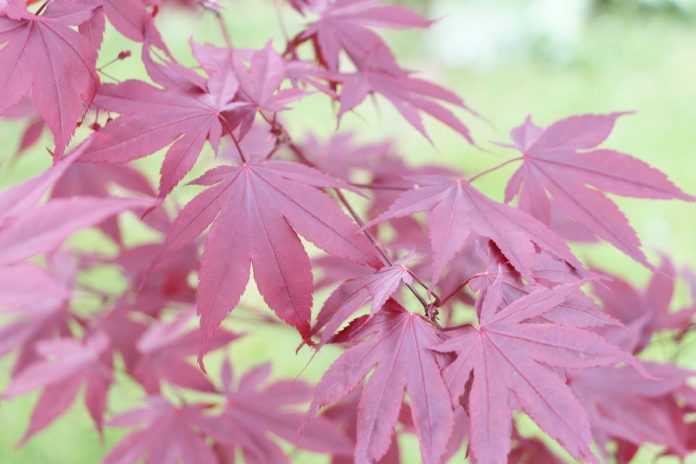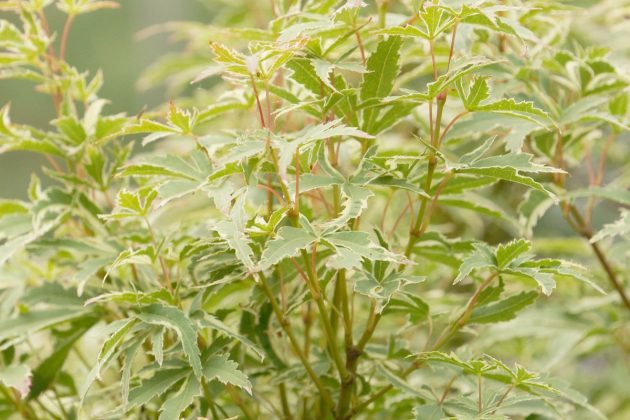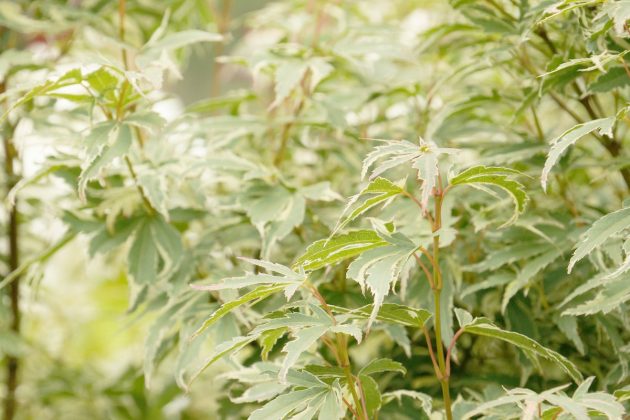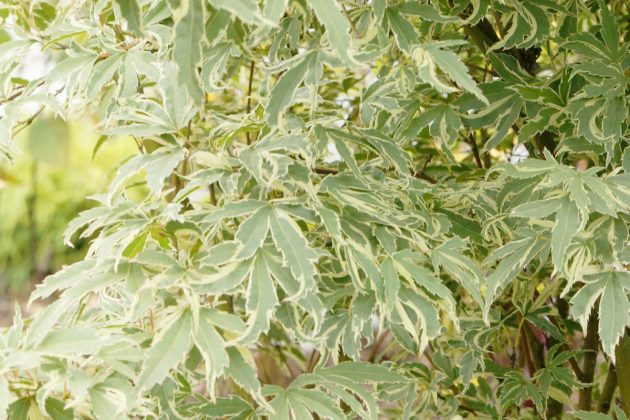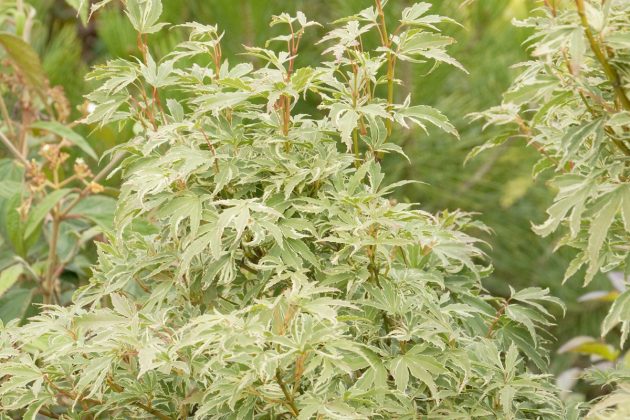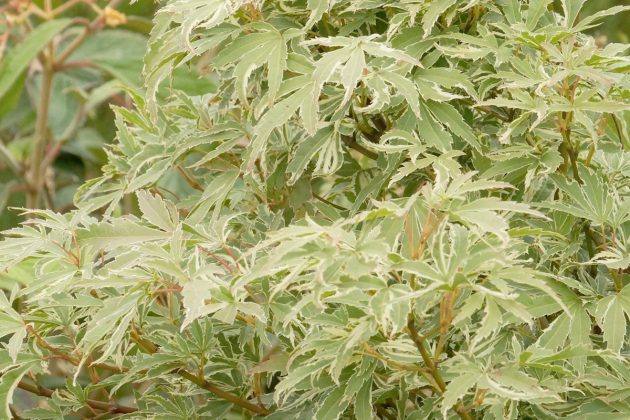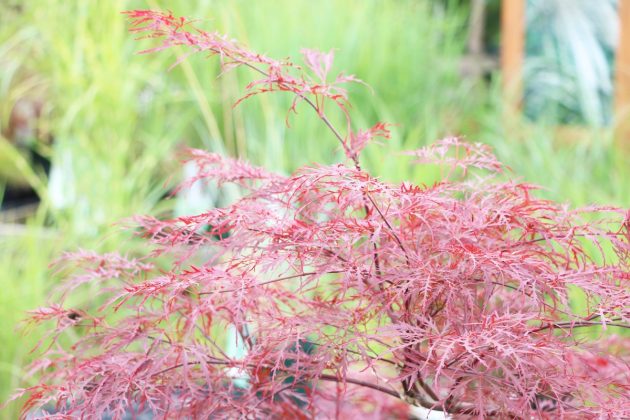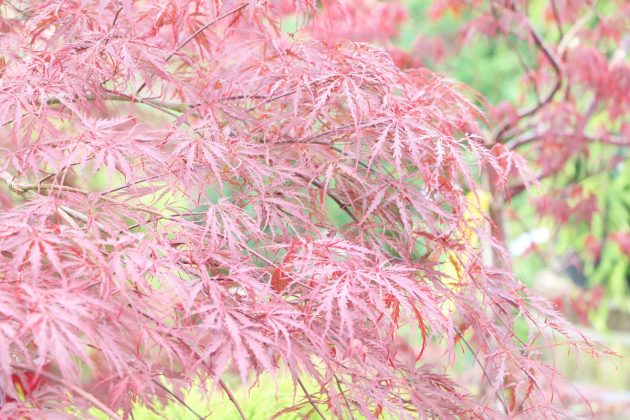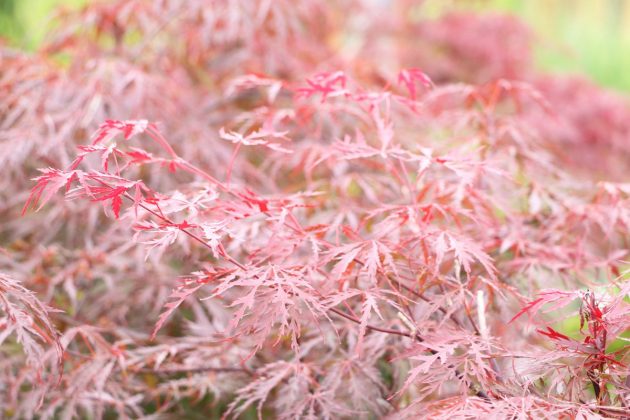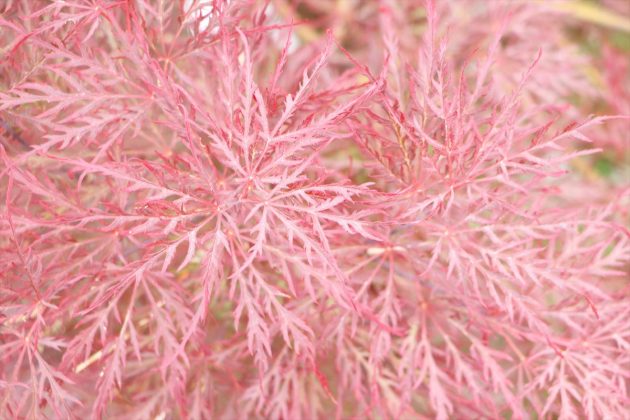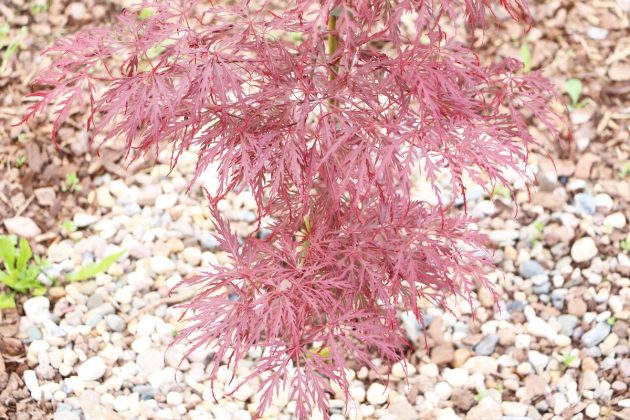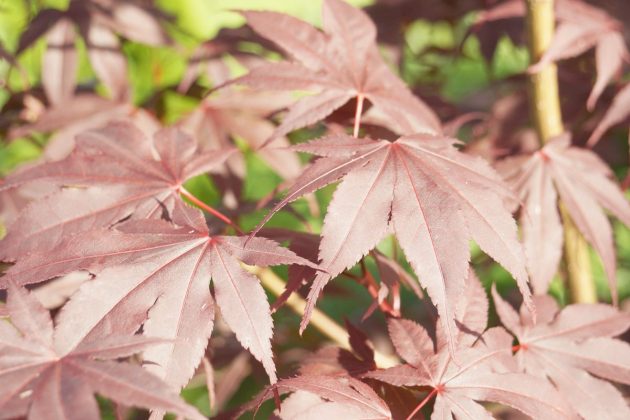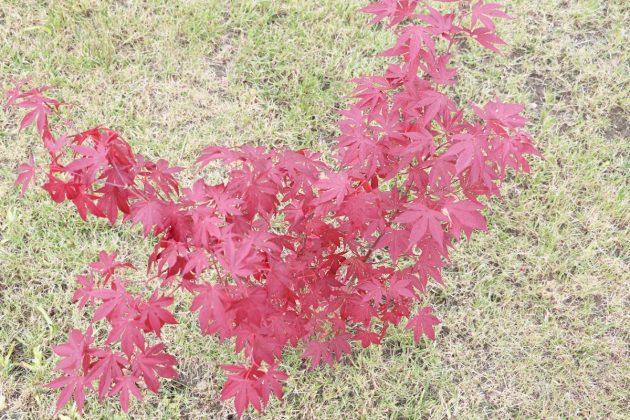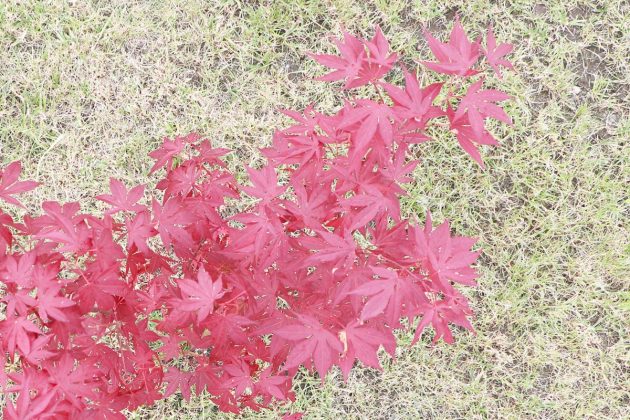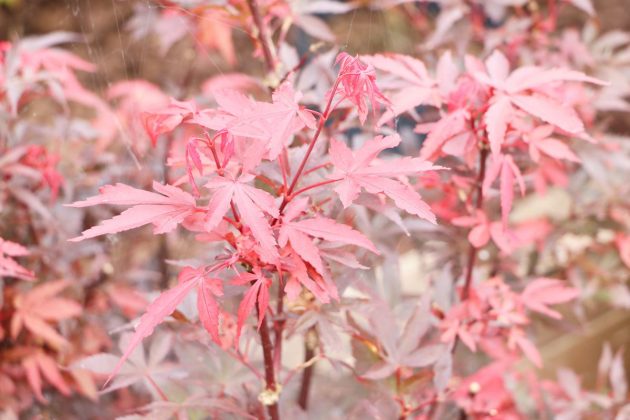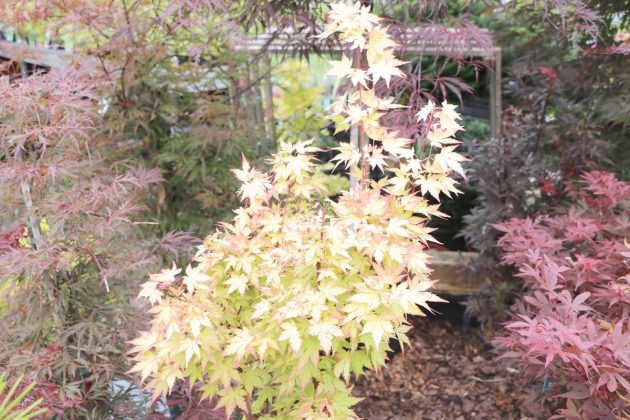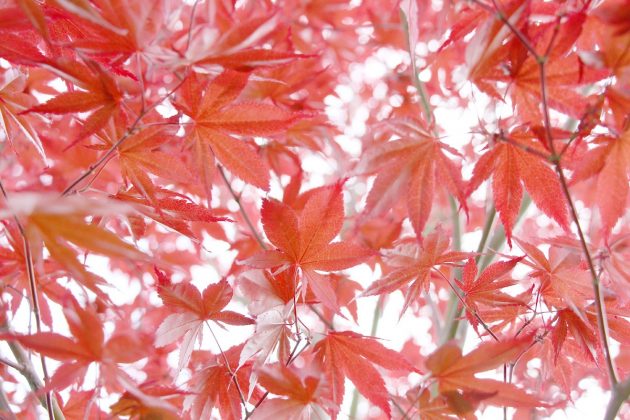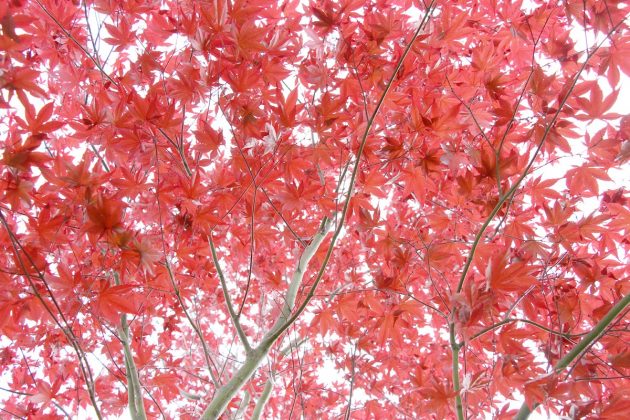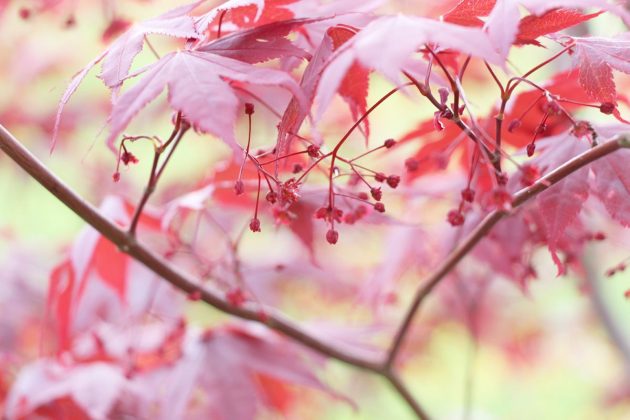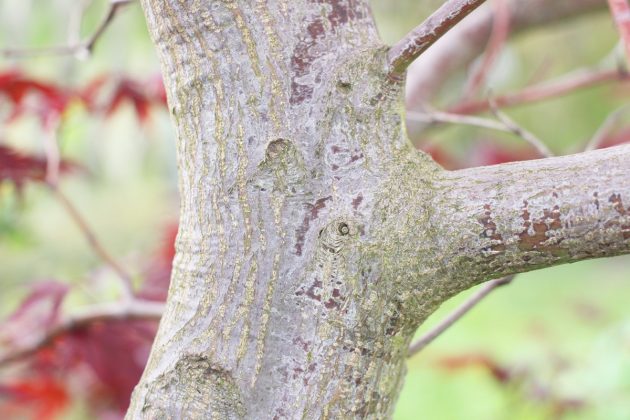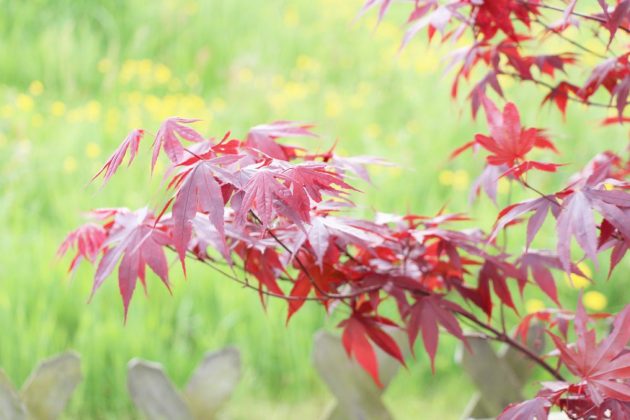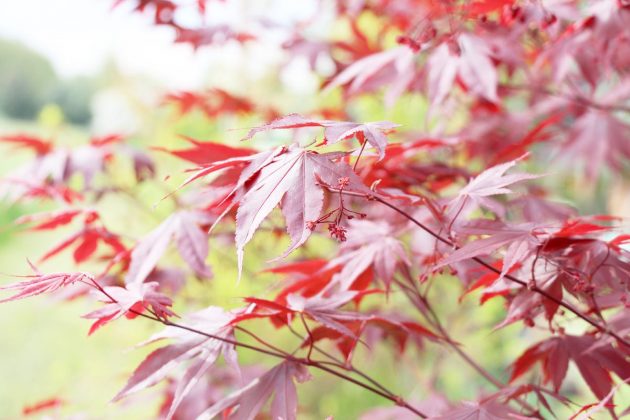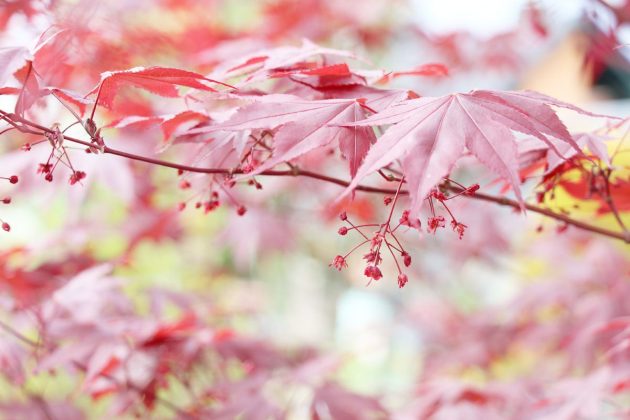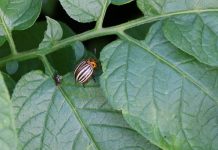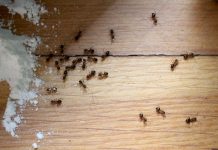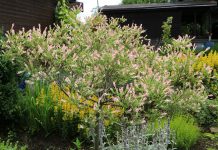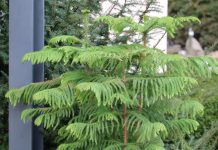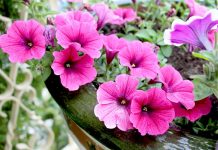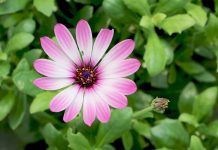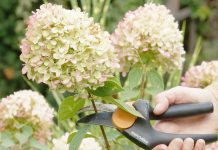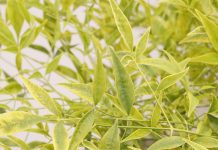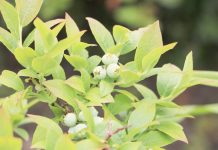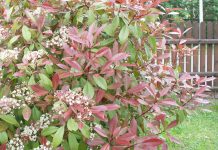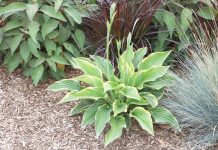The Japanese maple is an integral part of traditional Japanese garden design. Even among amateur gardeners, the Japanese maple is extremely popular. In addition to green varieties, used at pond sides, or as background or solitary plants, there are other impressive colour combinations. The splendid autumn colours of the filigree leaves, displaying different shades of red, and the coral red bark of some varieties show the unique ornamental value of this plant.
Plant Profile
Contents
- Genus: maple (Acer)
- Family: soapberry family (Sapindaceae)
- botanical name: Acer palmatum
- Origin: Japan, Korea; China
- Growth: broadly bushy, shrubby, small tree
- Height: 100 to 400 c
- Leaf: filigree, lobed or slit deep, different shades of red, autumn colours from intense red to bronze colours
- Flowering period: May to June
- Flower: unspectacular
- Fruit: pairwise arranged, winged nutlets
- similar types: fullmoon maple (Acer shirasawanum), Amur maple (Acer japonicum)
Acer palmatum is a spectacular exotic plant and an attractive enrichment for small or large gardens. In the German market gardens, it is often also offered as ‘Schlitzahorn’, which is also Acer palmatum. The growth of the Japanese maple is usually shrubby, although it can also be cultivated as a tree.
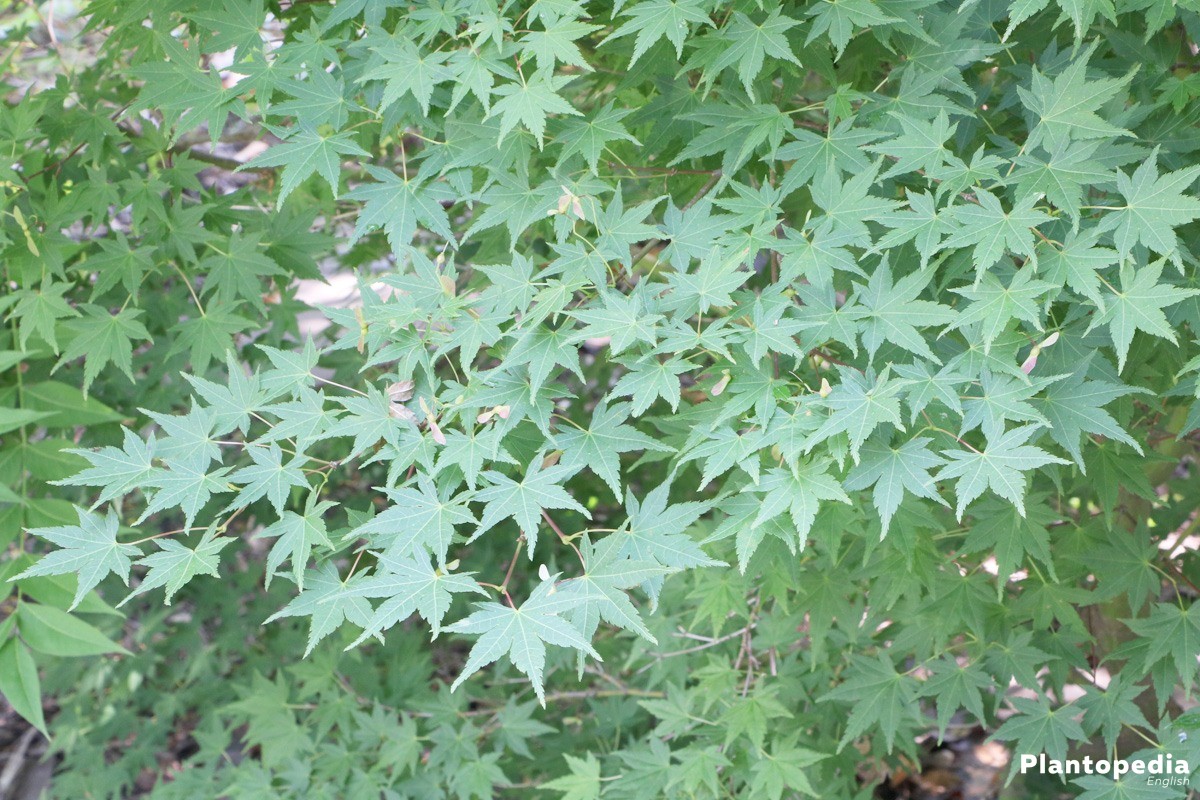
Its heights vary between 100 and 500 cm. The decorative, up to 20 cm long leaves are lobed or slit in different intensities. Between May and June, the unspectacular flowers appear.
Care
Not much effort is required to make sure that the Japanese maple keeps its beauty and above all its spectacular autumn colouring. Nevertheless, it is somewhat selective in terms of location and fertilization.
Location
In addition to the variety, the location has a decisive influence on the intensity of leaf colouring. In contrast to sun-sensitive species like Acer shirasawanum, the Acer palmatum prefers sunny and very light half-shaded as well as wind- and rain-protected spots. In such places it will unfold its splendor.
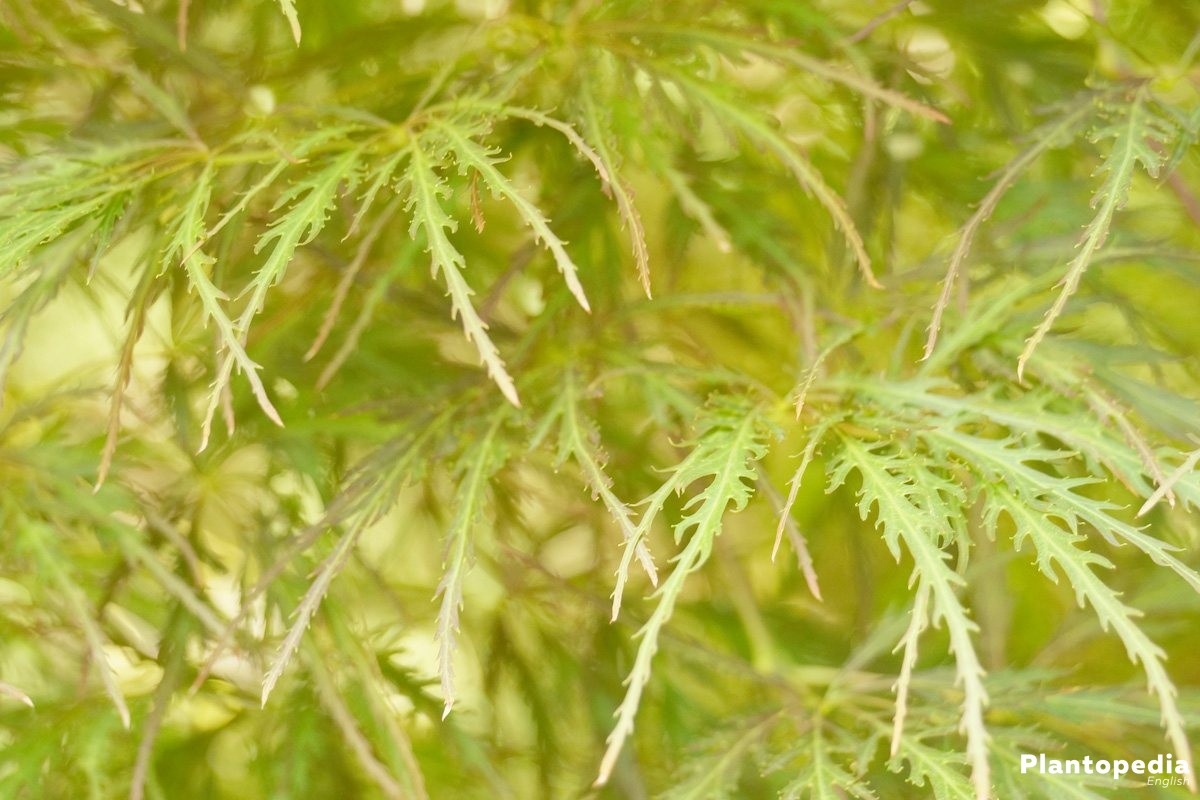
However, the bright midday sun should be avoided at all times. A place close to water, as beneath a pond, is recommended, because the higher humidity will be very good for this plant. Never ever should you choose a location for the Japanese maple and maples in general, which was affected by the feared Verticillium wilt.
Soil condition
The natural location of the Japanese maple is in mountainous regions on rocky subsoils. Accordingly, loose, water-permeable and humus-rich soils should also be preferred in the domestic garden. They can be slightly acidic to neutral, with the pH being typically between 4.5 and 7. Pouring water and rainwater must be able to drain well and waterlogging must be avoided.
Consequently, compacted soils are completely unsuitable. In water-logged or compacted soils, oxygen deficiency may occur very quickly, leading to the dying of the fine fiber roots, which are indispensable for the survival of this decorative plant.
A high-quality substrate for bucket plants, which is enriched with compost soil, is a good choice for cultivation in a bucket.
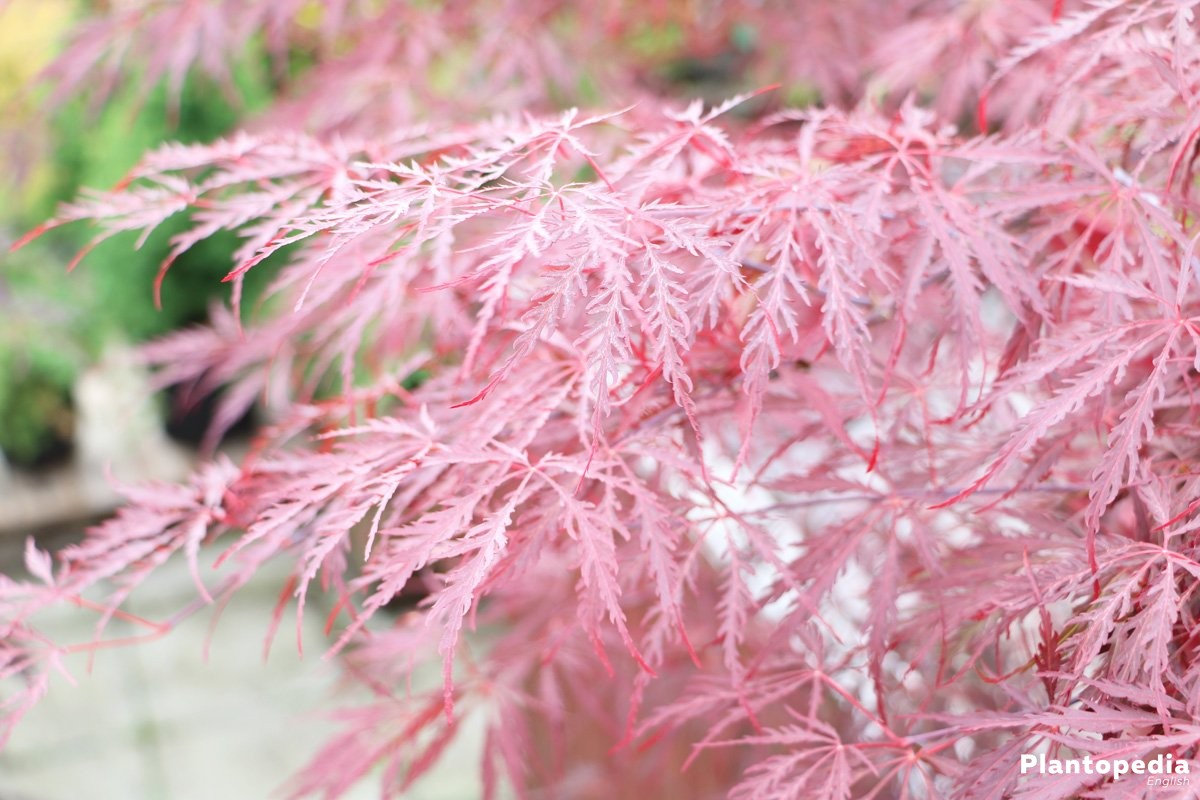
Again, a permeable substrate and a corresponding drain are important for the plant to survive. To make sure the substrate remains permanently loose and permeable, you can add some clay granulate, expanded clay or the slightly more expensive German ‘Geohumus’.
Planting in the garden
The best planting time is late spring, when the soil is already slightly warm. Thus, the Japanese maple can grow enough roots until the onset of the next winter and gain a foothold in the new location. Container plants can however be planted during the entire growth period.
- when choosing the location, ensure that there is sufficient space to other trees
- some varieties can reach a considerable width of three or four meters in age
- plants which are older than four years, should only be replanted in extreme emergency
- the Japanese maple belongs to the flat rooted plants – their roots grow very broadly
- consequently, the root area must be excavated very generously
- dig a sufficiently large planting hole
- a big portion of ripe compost is mixed with the soil excavation
- expanded clay or coarse sand can further improve the soil
- this is particularly suitable for heavier, less permeable soils
- thoroughly loosen the soil in the planting area to a depth of about 50 cm
- place the plant in the middle and fill the hole with the excavation
- finally, slightly tramp down the soil in the root area and pour the plant
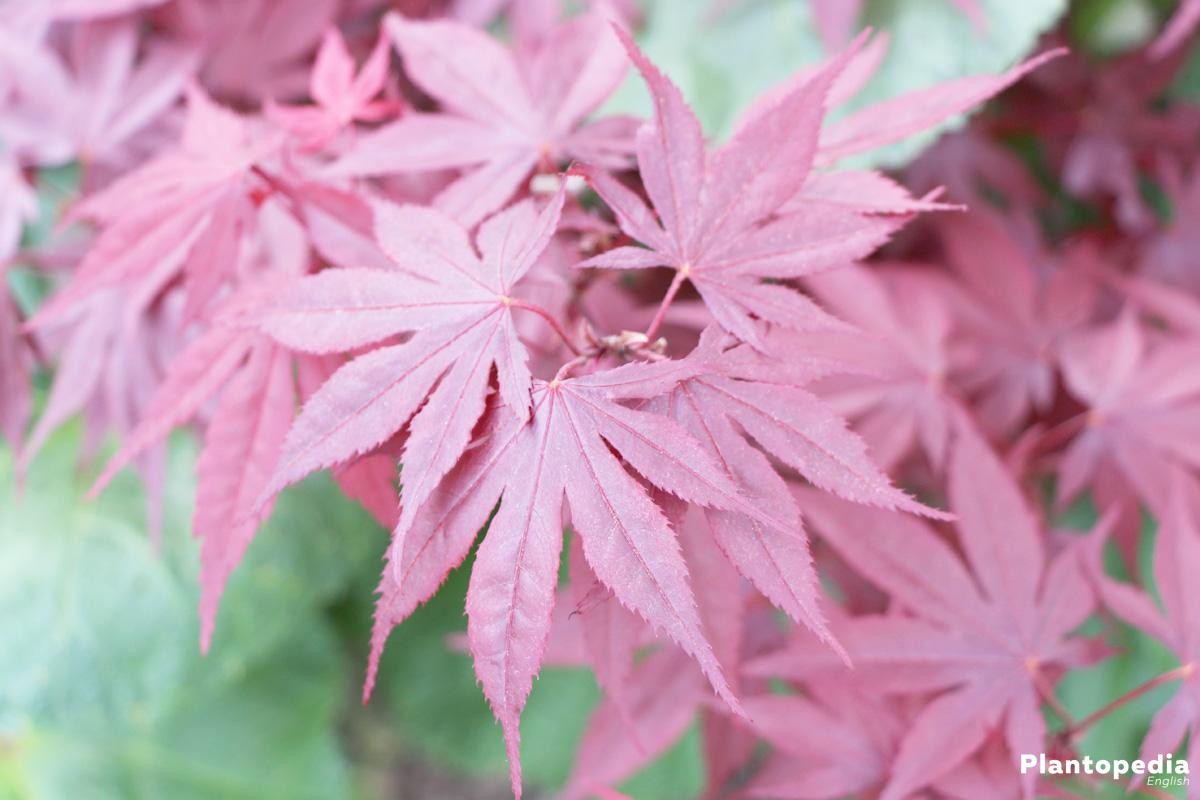
Bucket planting
In general, almost all varieties of Acer palmatum can be cultivated in a bucket, as long as it is large enough. Dwarf varieties are particularly suitable for bucket cultivation. The bucket should have a diameter of about a sixth to a quarter of the final tree height. In addition, it is advisable to dispense with plastic vessels and prefer using clay pots.
Pots of plastic may heat up very quickly in the sun. Clay, on the other hand, ensures a certain cooling thanks to better evaporation. However, the substrate dries out more quickly here, so that the plant must be poured more frequently.
The depth of the bucket should be at least one and a half times the size of the root ball. First, a layer of several centimeters of clay granules, expanded clay or coarse gravel should be filled into the bucket. On top of this, you must put some substrate. Now the plant is inserted in the middle and the pot is filled up with substrate to about 5 cm below the edge. Finally, press the soil and pour well.
Watering
Although Japanese maples do not like waterlogging, particularly young and freshly planted specimens need a lot of water. One reason for this is that these shrubs are flat-rooted and therefore do not reach moisture from deeper soil layers. This means that they can not adequately supply themselves with the precious water, especially in summer.
Therefore you should pour them regularly and particularly in warm, dry weather you must supply them with plenty of water. Older specimens are only poured in the case of persistent drought, and they will most likely overcome a temporary water deficiency without problems.
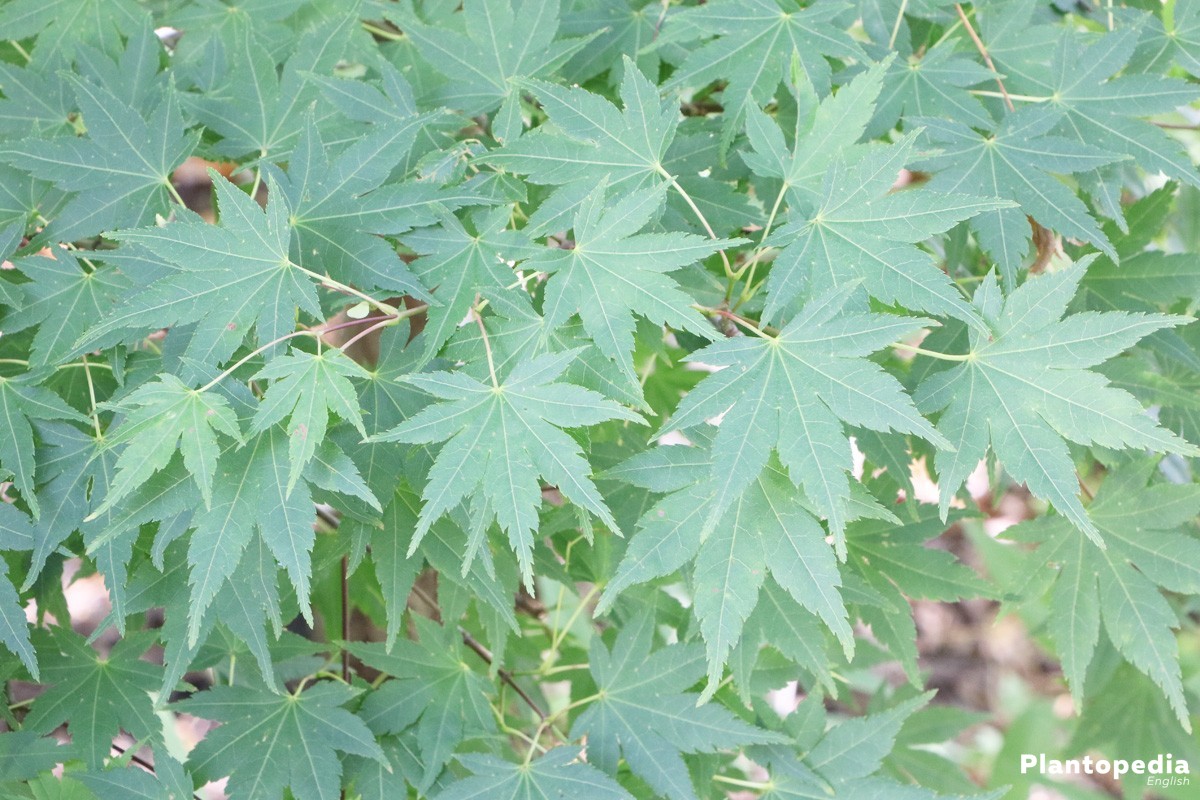
There is only a limited space available for pot plants; so the substrate dries much faster than in the garden. This makes both the watering and the supply of nutrients somewhat more difficult. Pour the bucket plant regularly. The water demand is the higher the larger the Japanese maple is.
Fertilizing
Regarding the supply of nutrients, this plant is relatively undemanding. Care should be taken when fertilizing this decorative plant, as the roots are relatively close to the soil surface.
- already mix some compost to the soil when planting
- then no further fertilization is necessary in the first year
- mix compost to the soil again during the second year
- the first time in April and another time in June
- alternatively you can use a liquid maple fertilizer
- liquid fertilizer should be administered with the water from April to August every 3-4 weeks
- excessive fertilization should be avoided
- it reduces the winter hardiness and affects the autumn colour of the leaves
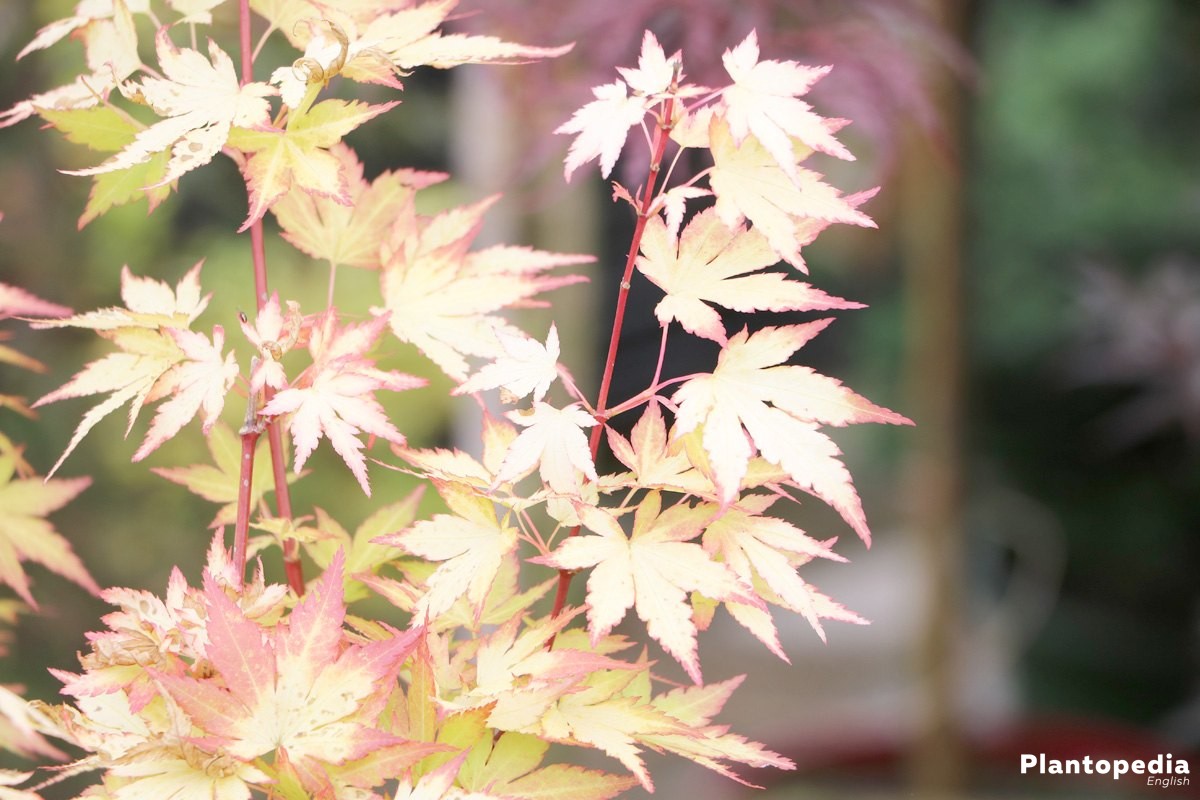
Bucket plants need less fertilizing. A good complete fertilizer or some compost once a month from April to August are completely sufficient.
Cutting
The Japanese maple generally doesn’t tolerate cutting measures very well. Small corrections such as the removal of damaged, dried up or dead shoots are usually without problems, but your actions must be moderate. Larger interventions, on the other hand, should only be carried out in exceptional cases. Before doing a cutback, you should remember that cut surfaces remain visible for a very long time on a Japanese maple, and branches that are removed directly from the trunk can only be replaced with difficulty or not at all.
If a cutting back is absolutely necessary, it should be done in late summer, because then the flow of juice is the least and the cuts can heal until autumn / winter. You should not cut into the old wood, but only into fresh wood, because only on fresh wood new shoots can develop. The best way is to cut just above a branch or about 2 cm above a bud.
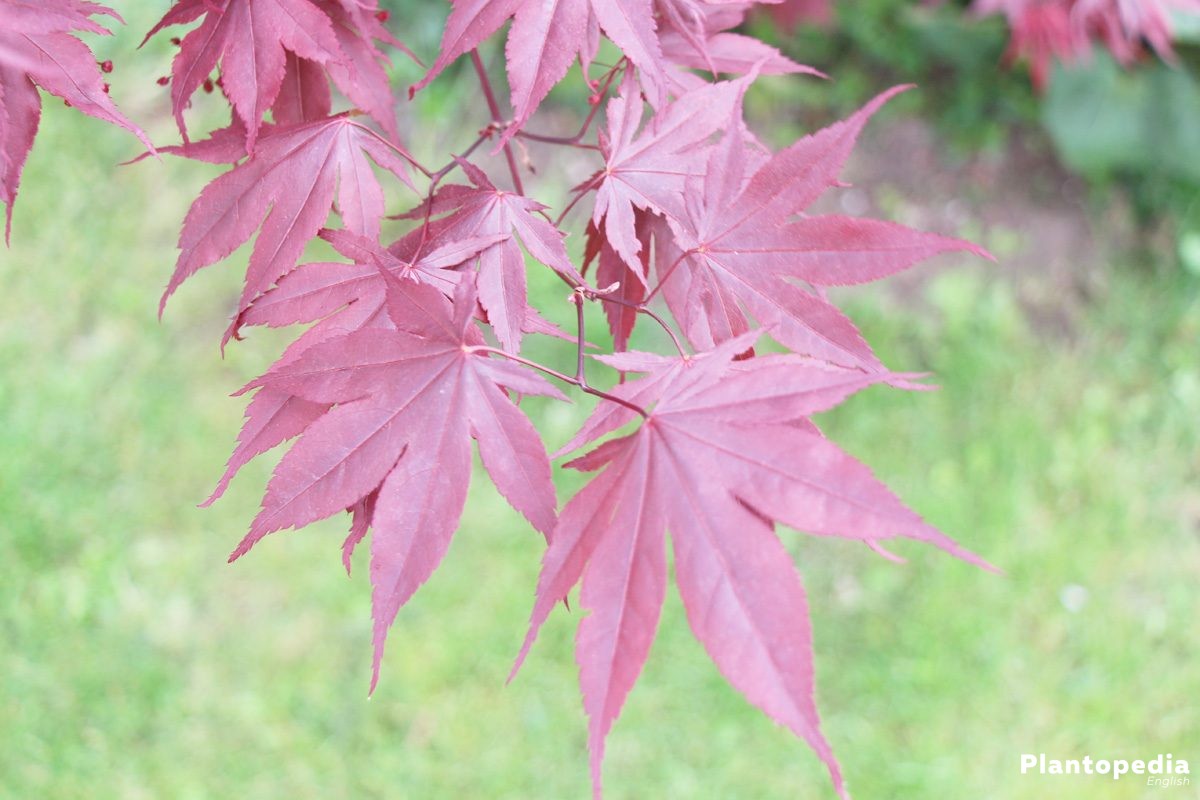
At the cut surfaces, the plant always dries out a little, which can also affect sleeping buds. Therefore you should not cut too tightly. Despite all this, the Japanese maple is most beautiful when it is not cutted and its characteristic form of growth is preserved.
Wintering
If it’s in the correct location, the Japanese maple has a good winter hardiness. Only in the case of very young or freshly planted specimens it is advisable to cover the root area with a layer of straw and pine brushwood. The crown can also be wrapped with a nonwoven.
In the case of bucket plants, wintering is somewhat more complex. Either you winter them in the house or you put them outdoors in a sheltered place, ideally in front of a wall or close to the house wall. To protect the root area, the bucket should be placed on a warm styrofoam plate and wrapped with air cushion foil, straw mats and / or nonwoven.
In addition, the root area can be covered with dry leaves or straw. The plant parts above the surface are also covered with a nonwoven. Plants in the bucket must also be supplied with water in winter, but only on frost-free days, also less frequently and more moderately.
Multiplication
Seed
Seed cultivation is possible all year round. However, the plant varieties grown this way are not pure. In addition, several seeds should always be used, as only about one in six will sprout. The seeds must first be subjected to a cold treatment, because they are cold germinators. You must put them into the refrigerator at 3-8°C for about 14 days and then soak them in hot water for 24 hours.
Subsequently, they are sown about 1 cm deep into the cultivation soil, the substrate must be moistened and kept uniformly moist until germination. The germination period is 6 – 10 weeks in a bright and moderately warm place. As soon as the young seedlings have several leaves, they can be isolated. In the first year, it is advisable to winter them in the house and to not plant them into the garden until next spring.
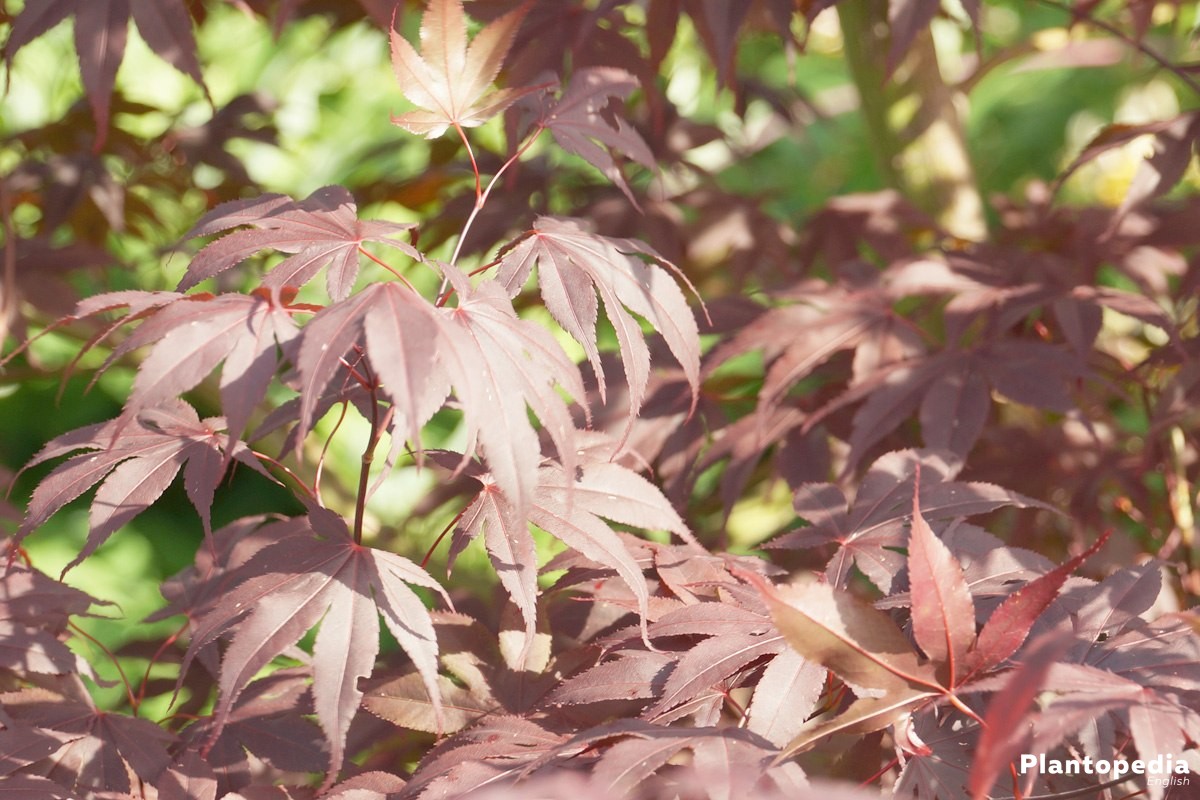
Cuttings
The multiplication by cuttings does not work with every Japanese maple, so horticultural nurseries predominantly cultivate them by means of grafting. If you nevertheless want to try it with cuttings, you should consider the following.
- fill the bucket with cultivation soil
- thoroughly moisten the substrate with a spray bottle
- insert some root stimulant into the substrate
- cut 10 – 15 cm long, half-lignified cuttings from the mother plant
- they should have at least 3 leaf pairs
- remove the lowest leaves and the tip
- cut the lower ends of the cuttings obliquely
- shorten remaining leaves to their half or third to minimize evaporation
- put them into the prepared cultivation substrate and press the soil
- cover it with cling film for sufficient humidity
- place the cultivation vessel in a bright and warm place without direct sun
- remove the film from time to time to avoid mould formation
- it can take several weeks before rooting
- disinfect cutting tools before and after cutting as far as possible
Diseases
Verticillium wilt
Under optimal conditions, the Japanese maple is quite uncomplicated. However, it is prone to the feared Verticillium wilt caused by fungi. These fungi live in the ground and through the roots they get into the pathways inside the wood, where they spread and block them. As a result, the maple is no longer adequately supplied with water and nutrients and finally dies. First signs are sagging, dried leaves and dying branches.
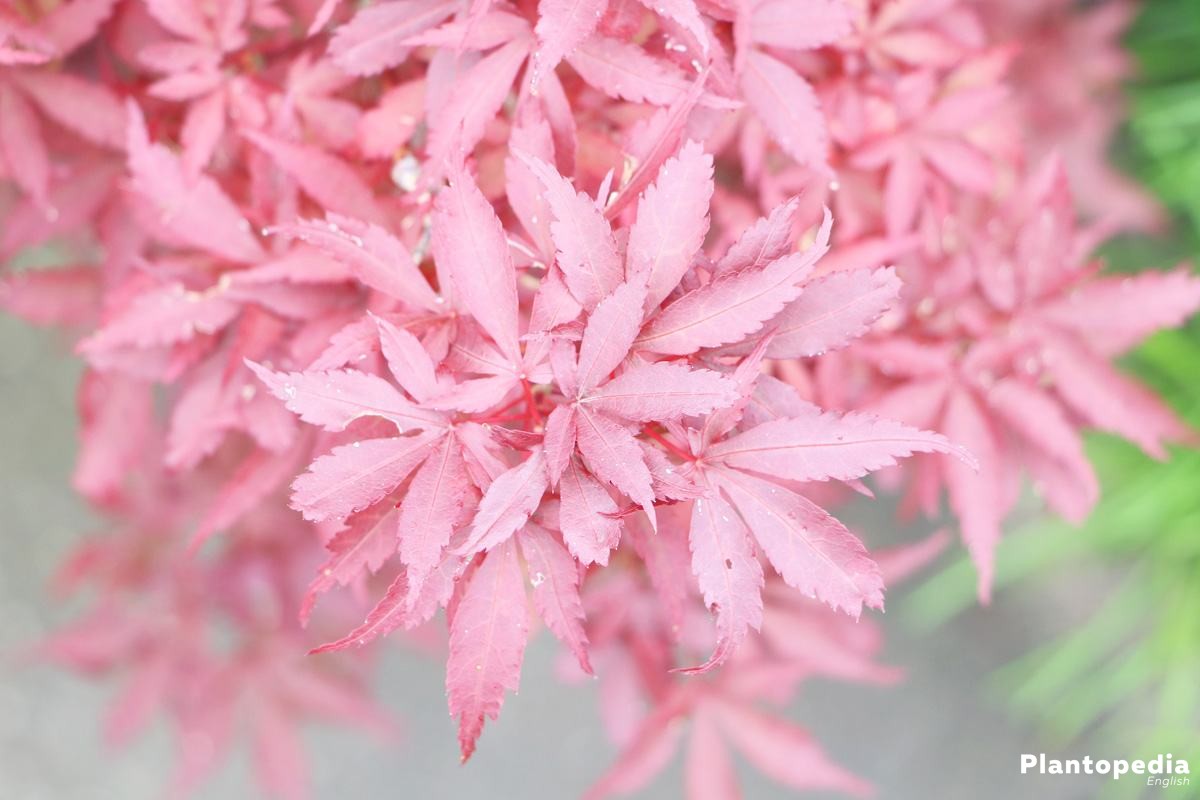
It is hardly possible to fight this problem. Neither fungicide nor a strong cutback can save the plant. In general, only the removal and disposal of the complete plant is possible. The only thing you can do is prevent. To do this, you should pay attention to the best possible location and soil conditions. You should never plant the Japanese maple in a Verticillium contaminated place. Even a large-scale exchange of the soil would not suffice here.
Varieties
Acer palmatum ‘Atropurpureum’
The deeply slit leaves of this red-leaved Japanese maple are purple in summer with a light bronze colouring. In autumn they are bright red. It grows as a large shrub or small tree and can grow to a height of 300 – 400 cm.
Acer palmatum ‘Bloodgood’
The at first black-red foliage of this resistant species shows a bright red leaf colour in autumn. Their leaves are deeply slit and they reach heights between 400 and 500 cm.
Acer palmatum ‘Fireglow’
The slightly toothed, extremely decorative leaves of Acer palmatum ‘Fireglow’ are bright velvety red and become orange-red in autumn. It grows broad and compact with heights of 200 – 350 cm.
Acer palmatum ‘Oregon Sunset’
This dwarf form with bushy growth becomes about 150 cm high. Its leaves, which are deeply slit too, are initially bright red and become red violet in autumn.
Acer palmatum ‘Moonfire’
The budding of the species ‘Moonfire’ is in light purple. In the summer it forms a dark purple colouring which turns to a bright magenta colour in autumn. Its maximum growth height is 300cm.

